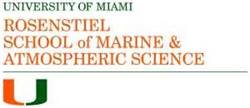SCOPE Study Underway

Researchers led by the University of Miami Rosenstiel School of Marine and Atmospheric Science are in Florida’s Panhandle this week to study how oil and other pollutants migrate in the Gulf of Mexico.
For the three-week experiment, begun last week and called SCOPE – Surfzone Coastal Oil Pathways Experiment – scientists are deploying GPS-equipped drifters and other advanced instruments to track ocean currents off Ft. Walton Beach and better understand how oil may move onshore in the event of a future spill.
“In the aftermath of the Deepwater Horizon oil spill it became clear that understanding the ocean currents in the surf zone is vital to improve our understanding and prediction of oil spills,” said UM professor Tamay Özgökmen, director of the Consortium for Advanced Research on Transport of Hydrocarbons in the Environment (CARTHE). “There are catastrophic socio-economic impacts when oil spills reach our beaches.”
 Some of the GPS-equipped drifters were designed by students at three Florida high schools, including Miami-Dade’s MAST Academy.
Some of the GPS-equipped drifters were designed by students at three Florida high schools, including Miami-Dade’s MAST Academy.
UM’s Ad Reniers and his colleague Jamie MacMahan, from the Naval Postgraduate School in Monterey, Calif., are deploying a variety of instruments, including 200 GPS-equipped drifters, unmanned aerial vehicles, and pressure and dye sensors at and below the surface at varying depths, to measure the movement of coastal ocean currents and determine how they carry oil, fish larvae, or toxins close to shore.
“This study will collect important data necessary to understand the ocean currents in the near-shore marine environment,” said Reniers, associate professor of applied marine physics at the Rosenstiel School and lead SCOPE investigator. “The information collected will be used to develop computer models of the coastal zone to improve our scientific understanding of this region in the event of a future oil spill, as well as to better understand how larvae or water pollutants travel close to shore.”
The unmanned aerial vehicles, which are equipped with cameras to monitor the drifters, are used in a dye experiment, where EPA-approved colored dye is placed in the near-shore waters to collect visual data on the movement of currents.
As part of a CARTHE-sponsored educational outreach program, several of the drifters were designed by students from three Florida high schools, Miami-Dade County’s MAST Academy, South Broward High School and Tallahassee’s Maclay School.
The research was made possible by a grant from the Gulf of Mexico Research Initiative (GoMRI), a 10-year, $500 million independent research program established by an agreement between BP and the Gulf of Mexico Alliance to study the effects of the Deepwater Horizon accident and the potential associated impact of this and similar incidents on the environment and public health.
SCOPE is the second large experiment conducted by CARTHE, bringing together a wide range of scientific experts and experiments to study oil spills.
The initial experiment, known as GLAD, for Grand Lagrangian Deployment, was conducted near the Deepwater Horizon site in the summer of 2012, also under the auspices of GoMRI.
Information collected by scientists from both experiments will be used to model the transport of oil in the Gulf of Mexico, in the event of a future spill.
The SCOPE Experiment is a project of the UM-based CARTHE. The CARTHE program includes 26 principal investigators from 12 research institutions in eight states. Together these scientists are engaged in novel research through the development of a suite of integrated models and state-of-the-art computations that bridge the scale gap between existing models and natural processes. For more information about CARTHE, please visit www.carthe.org or on Facebook at www.Facebook.com/carthe.gomri.

